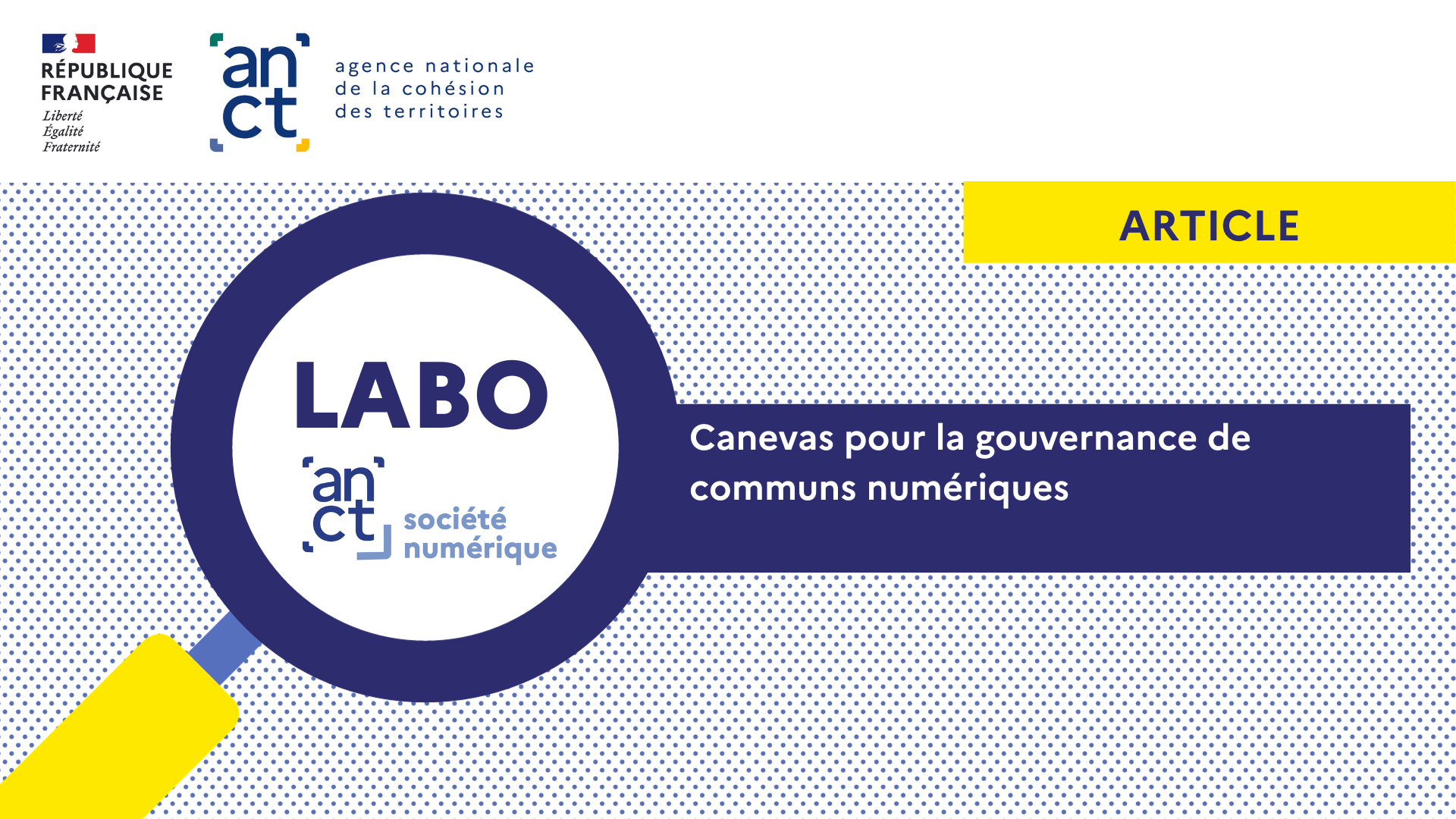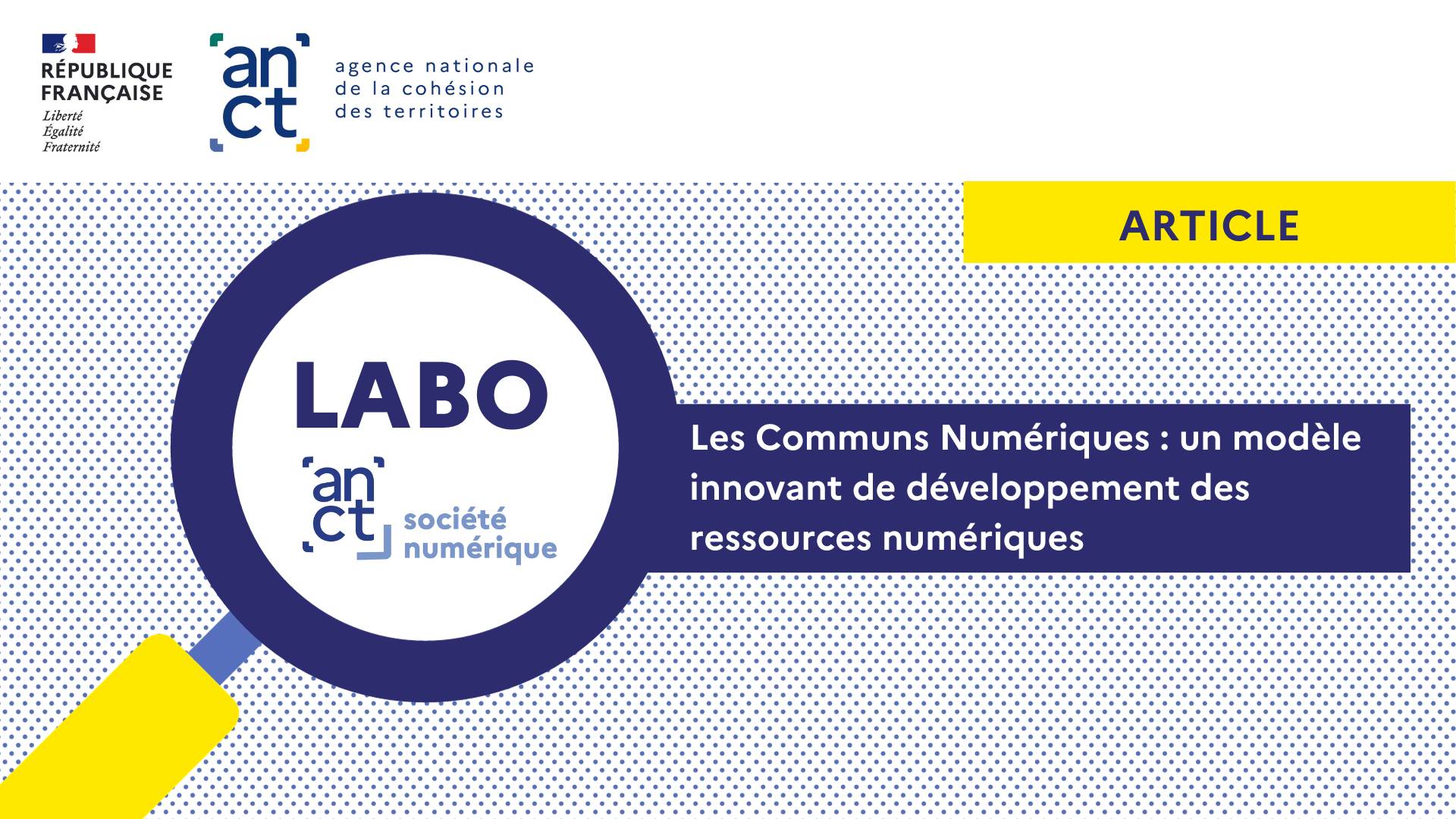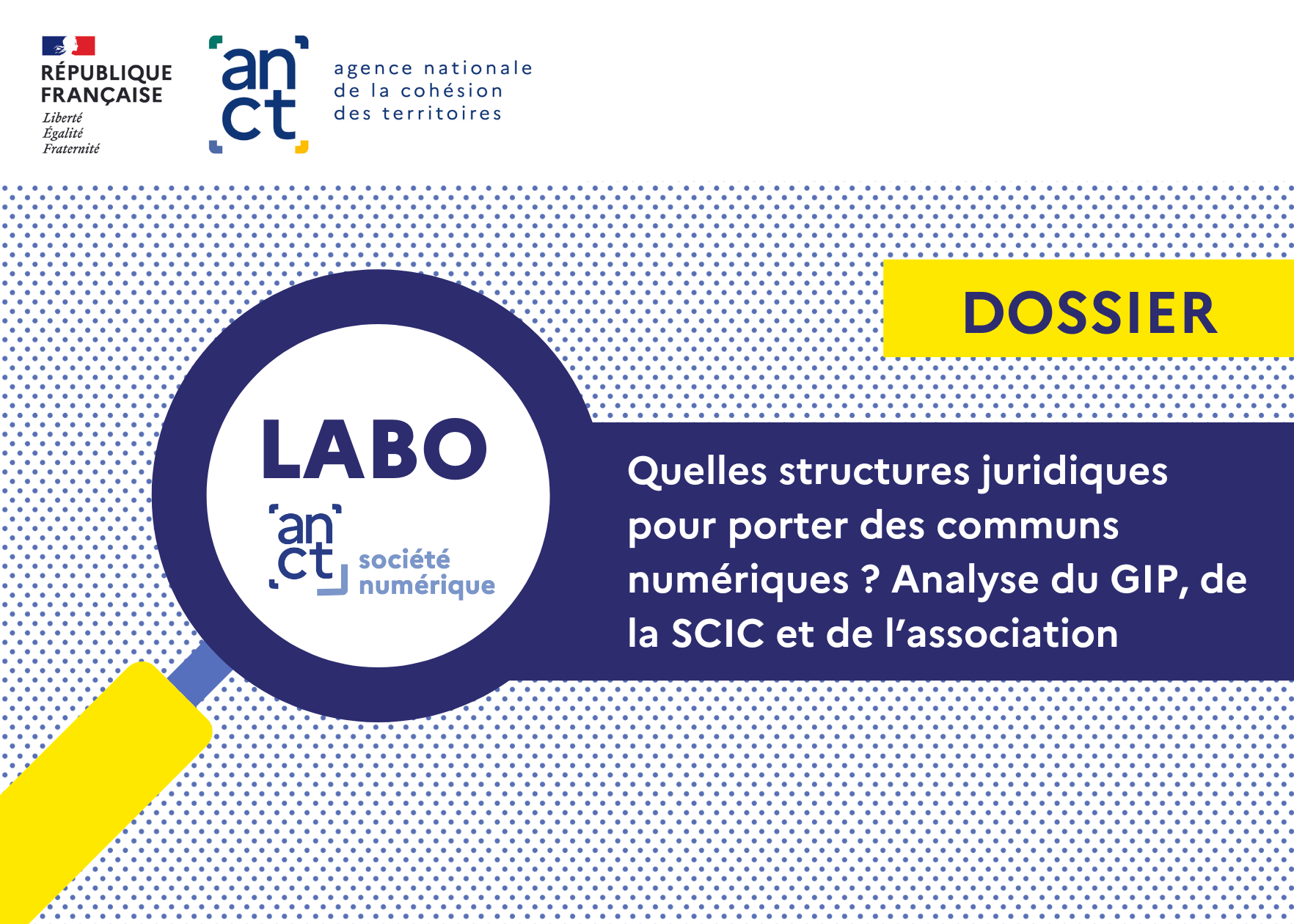During the 2022 edition of Numérique en commun[s], inno³ facilitated a workshop during which the "Framework for the governance of digital commons" was presented, an awareness and facilitation tool for commons holders.
Counting among the regulars of the event since its launch in 2018, inno³ participated in the 2022 edition of Digital in common[s]. This fifth national edition was held on September 28 & 29, 2022 at the Stade Bollaert-Delelis of Lens.
More than an annual meeting, NEC is an initiative co-sponsored by the Digital Society Program oftheANCT (National Agency for Territorial Cohesion) and The MedNum(Agence Nationale de la Cohésion Territoires), allowing to build a digital society of general interest: open, inclusive, accessible, sustainable, sovereign and ethical.
This post is an opportunity to expose the different actions carried out by the firm in collaboration with the Digital Society program of the ANCT and to present the stakes and consequences of the workshop.
Genesis of the tool
Resulting from a collaboration with the Labo SoNum
The production and the presentation of the Canvas are part of the collaboration between inno³ and the Digital Society Program of the ANCT, in relation to its action in terms of equipping local authorities, decision-makers and professionals working with the public on digital issues.
The whole of this support (in terms of legal and economic models of the commons likely to be mobilized by administrations and local actors in the implementation of their digital strategies) gives rise to the publication of notes and studies on the present website of the Digital Society Laboratory.
Two reference productions
Two productions that have contributed to the design of the canvas are included:
- the Digital Commons Toolkit which includes a tutorial addressing the main issues surrounding the emergence and sustainability of digital commons and a series of recommendations (and list of actions) to guide all digital commons project leaders through the different phases (from prefiguration to emancipation of the commons).
- The posts in the "Structures of the Digital Commons" series published from June to December 2022:
- Which legal structures to carry digital commons (#Introduction) ;
- The Public Interest Group (PIG) as a legal structure for the digital commons (#1 Theoretical clarification and #2 Concrete application)
- The Cooperative Society of Collective Interest (SCIC) as a legal structure for the digital commons (coming soon: #1 Theoretical clarification and #2 Concrete application)
Return of experimentation at Numérique en commun[s]
NEC, an event that has become a must for the commons
The 2022 edition of Digital Commons was centered around 6 themes: Data & Territory; Participation & Inclusion; Accessibility & Non-Recourse; Culture & Digital Competence; Resilient & Sustainable Territory; and Commons & Sovereignty.
It was in the context of the latter that the workshop proposed by inno³ and entitled " Managing a commons: what organizational model to finally make it work? ".
In order to animate such a workshop, inno3 has set itself the challenge of creating and sharing a framework to accompany projects in their reflection by allowing them to materialize and manipulate the main concepts related to the commons approach.
Designing a framework for the governance of the digital commons
inno³ facilitated a workshop on the governance of the commons based on a first version of a "Framework for the governance of digital commons".
At the crossroads of tools like the Business Model Canvas, Circular Canvas or MyData Design Toolkitwe have designed a custom tool addressed to digital commons projects.
It is presented in the form of a framework that allows for the overall modeling of the governance of a common project, accompanied by a series of sheets that allow for the appropriation and materialization of all the underlying issues. The whole is included in a self-supporting A3 booklet.
The sheets cover three areas:
- DEFINITION: detail the state of its project and the values it stands for;
- OPERATION: Develop a roadmap around its governance, including describing the circles and rules of contributions;
- PROJECTION: to allow a projection on a multidimensional action plan, with regard to the strengths and areas for improvement of the project.
Each part is guided by questions and examples. The booklet also includes resources and testimonials to help you compare your project with the practice of those working in the field and to enrich it with their feedback.
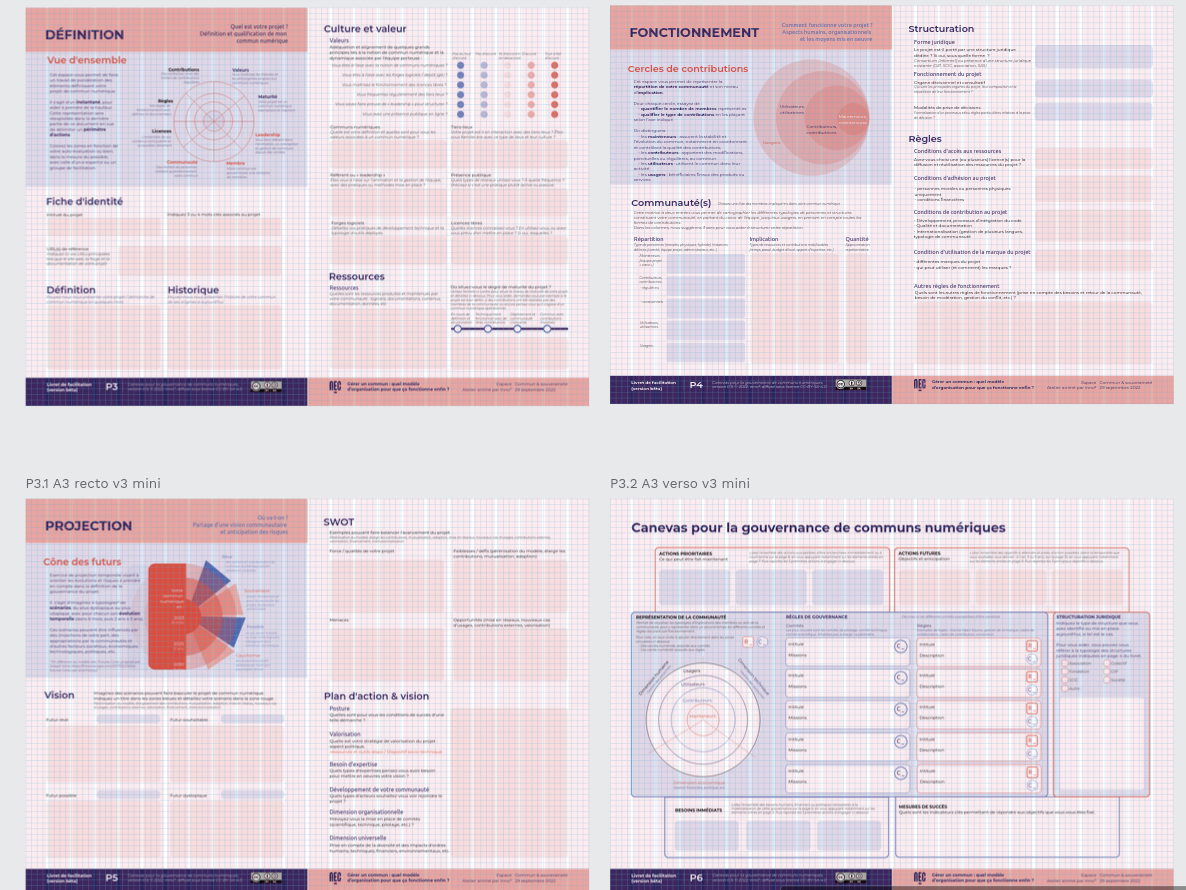
Once this first phase of information gathering has been completed, the Canvas proposes a mode of representation that makes it possible to materialize and adjust, in an efficient and sustainable manner, the governance of a project according to the motivations of the communities involved.
Convergence with other productions
The implementation of the framework was also based on numerous works and experiments conducted in recent years within the firm, including:
- A series of complementary interviews carried out before the event, with holders of digital commons projects, aiming to collect their practices but also the problems encountered, with the objective of providing solutions.
- The resources produced in previous editions of NEC :
- Toolkit to the Digital Commons;
- The digital commons and its resource ;
- The publications and studies carried out for the Digital Society Laboratory (Dossier " Which structures to support the digital commons ") ;
- L'research activity conducted within the firm in the field of collaborative systems modeling (including a CIFRE thesis specifically dedicated to the commons).
Combining theoretical knowledge and practical experience, the Framework for the governance of the digital commons proposes, through 3 practical sheets, to accompany the holders of digital commons projects in the formalization of the definition of the latter; of its current operating methods; and finally in a projection into the future of the project.
Workshop facilitation
The workshop held during NEC 2022 and announced in a previous post brought together more than 20 digital commons project leaders.
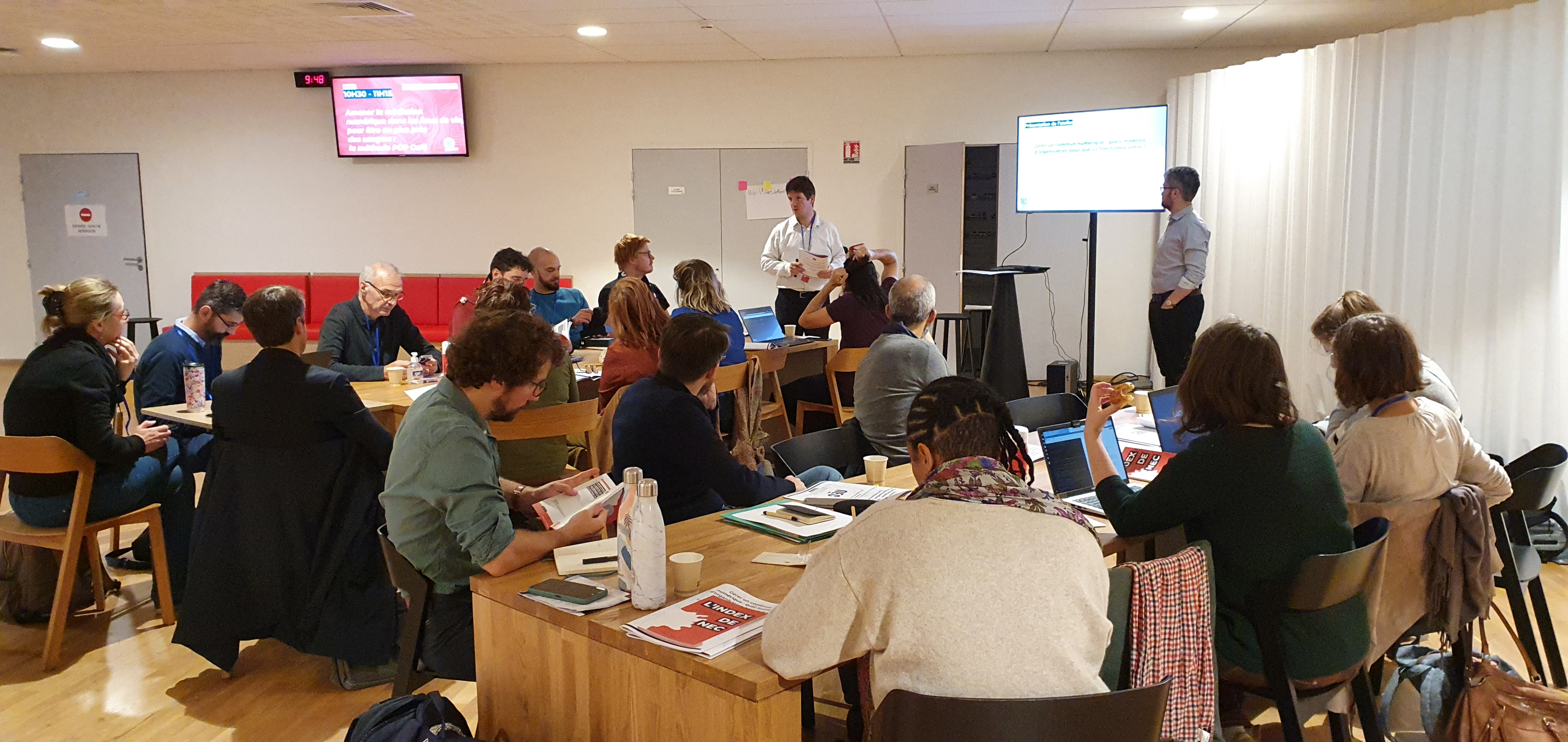
The latter, divided into several groups, were able to complete the framework with elements from their projects, in order to give critical feedback on both the content and the form of the tool. These first feedbacks are positive and will allow inno³ to produce a more accomplished version of the Canvas in the next months.
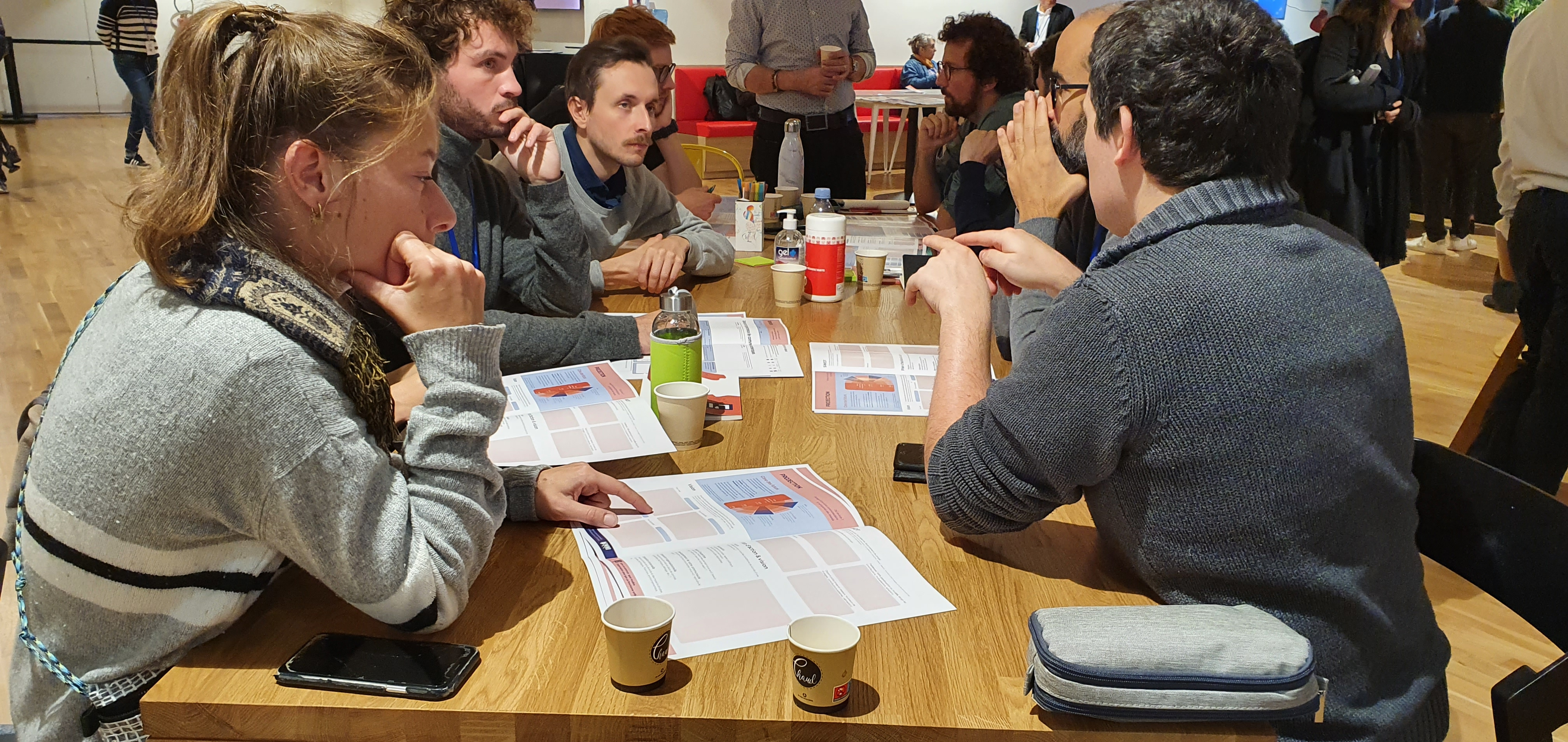
How to contribute
Like all inno³'s productions, the Canvas is meant to be a commons and is therefore shared under a free Creative Commons By-SA license. Thus, you can use it and adapt it to the specificities of your project in order to make it the most relevant tool possible.
If you wish to participate more closely in the next evolutions of the project, or simply to be informed, you can write to us at commonsmodelcanvas@inno3.fr.
Do not hesitate to share with us your experiments and reappropriations.


